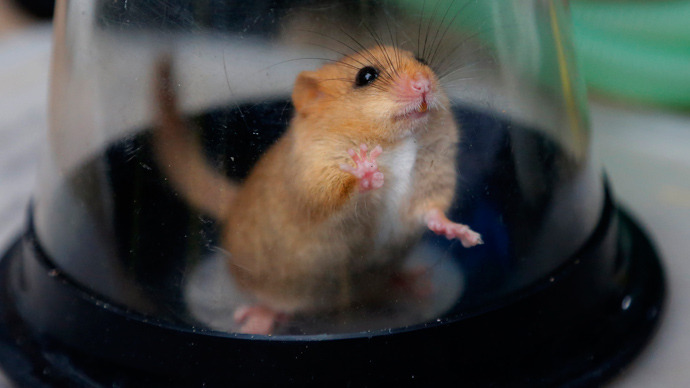US to bomb Guam with dead mice

In a desperate attempt to kill off two million brown tree snakes that are plaguing the territory of Guam, the US is bombing the island with poisoned dead mice, hoping that the snakes will eat them.
“We are taking this to a new phase. There really is no other place in the world with a snake problem like Guam,” Daniel Vice, assistant state director of the US Department of Agriculture’s Wildlife Services in Guam, told the Associated Press.
The pile of dead mice, laced with painkillers that are deadly for snakes, will rain down onto Guam’s jungle canopy as scientists drop them from helicopters in a last-ditch attempt to eradicate the invasive species.
Even though the venom of brown tree snakes is nonlethal for humans, the snake infestation has damaged infrastructure and wiped out other species in Guam. Slithering into homes, the snakes often bite people and damage power lines and wires, resulting in large-scale blackouts. The tree snakes can grow to more than 10 feet in length, although most of them are usually just a few feet long.
Nearly all of Guam’s native birds have become wiped out in the years since the tree snake first came to the island aboard a US military ship more than 60 years ago. With much of Guam’s wildlife having become endangered or extinct, tourism has dwindled, thereby inflicting an economic toll on the US territory.
Located 3,000 miles away, officials in the state of Hawaii have long feared that the snakes could make their way over to the tropical island and destroy its local habitat, as well.
Vice predicts that if the US and Guam make no attempts to contain the snakes, "the possibility of the snakes getting to Hawaii is inevitable."
The National Wildlife Research Center estimates that a Hawaiian brown tree snake infestation would inflict $593 million to $2.14 billion in economic damages each year, including widespread power outages and a significant decrease in tourism. In an attempt to control the Guam-based infestation and prevent it from spreading, the US government will bombard the island with the dead mice starting this spring. The painkillers that the mice will be laced with include acetaminophen, which is the active ingredient in medicines such as Tylenol.
Brown tree snakes are one of very few snake species that eat the corpses of dead animals that they didn’t kill themselves. Being highly vulnerable to acetaminophen, snakes that consume the dead mice will most likely expire.
Scientists will drop the dead mice individually from a helicopter. The bait will be attached to a flotation device with streamers that would ensure that the poisoned mice get caught in the branches of a tree, where the snakes live and feed.
Birds are also vulnerable to acetaminophen, but scientists claim that most of the birds have already been wiped out by the snakes anyway.
AP reports that the US government plans to begin dropping the poisoned mice in April or May.














